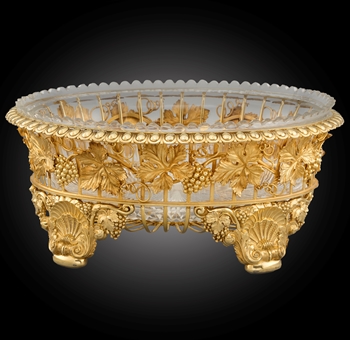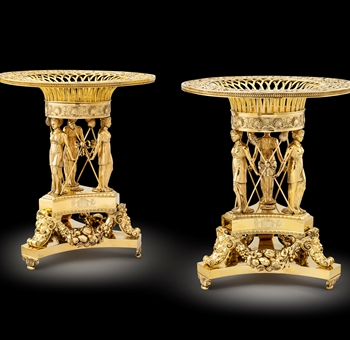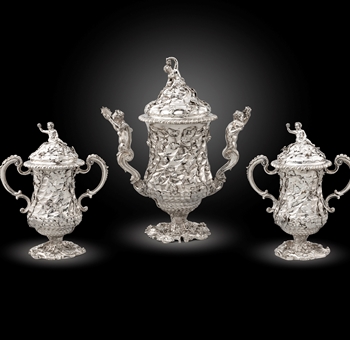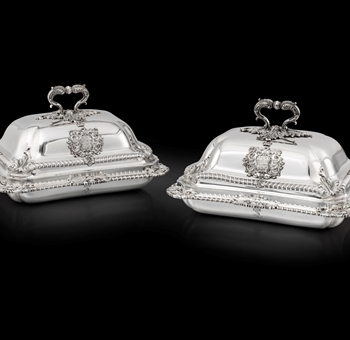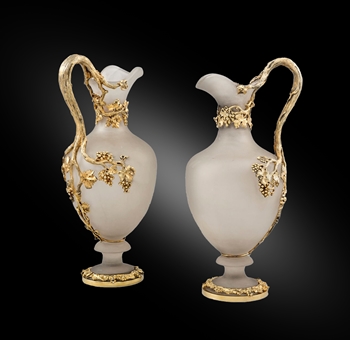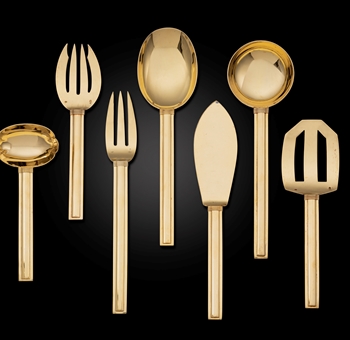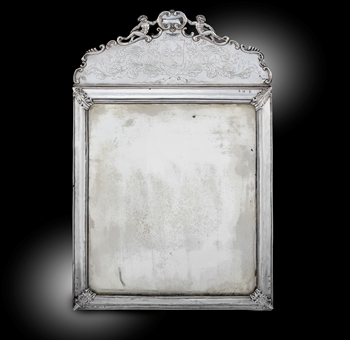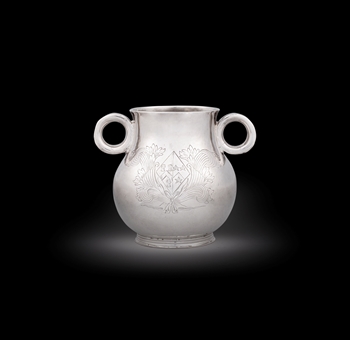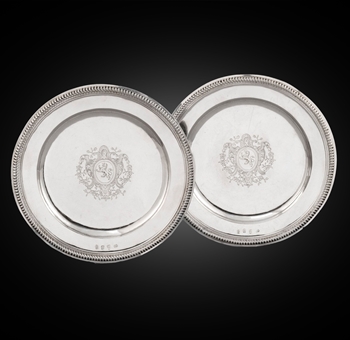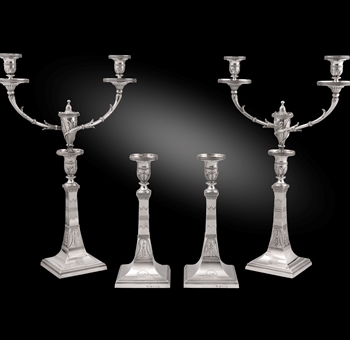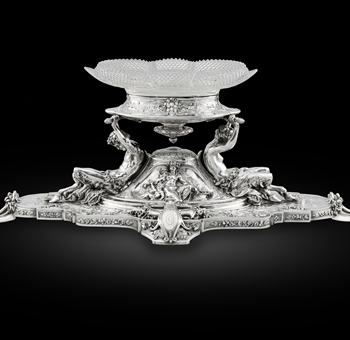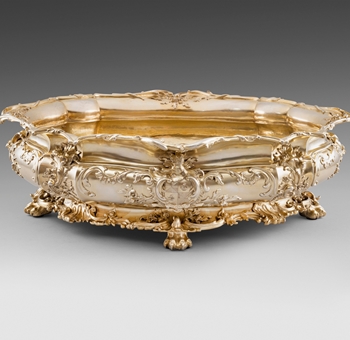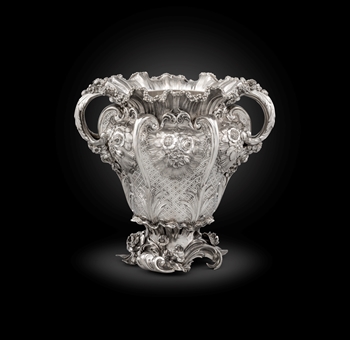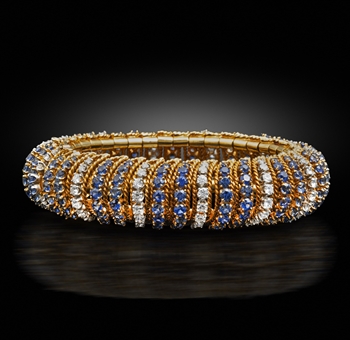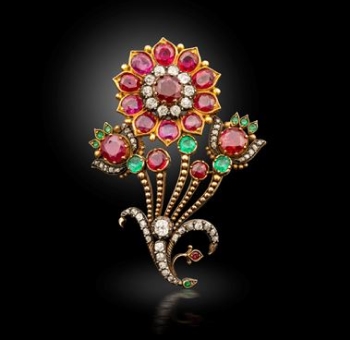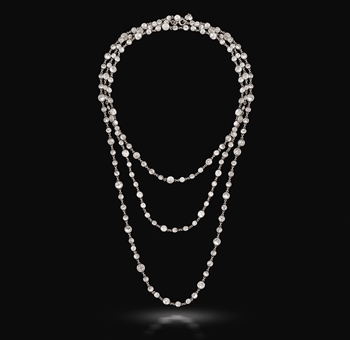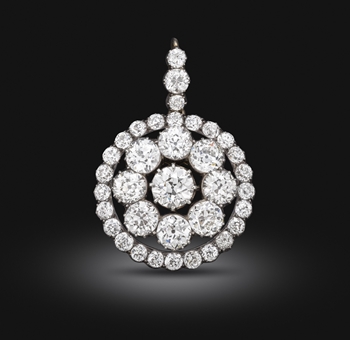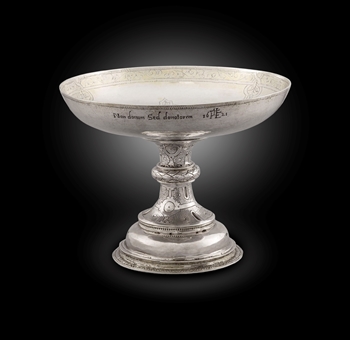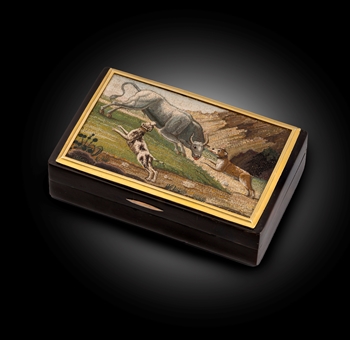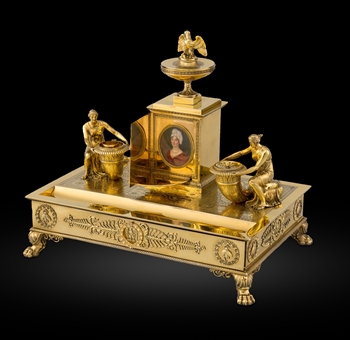 BACK TO LIST
BACK TO LIST
Three Tritons and a Lily Pad: the Mastery of Hunt & Roskell

Today we are featuring a striking pair of Victorian figural vases, dated London 1849 with the maker’s mark of Hunt & Roskell. The vases are further stamped with the retailer’s mark of Hunt and Roskell, late Storr and Mortimer. Standing nearly 40cm tall and weighing 11 kg. The triangular bases are adorned with three tritons, Greek Mermen. The bowls are formed as overlapping water lily pads which are embellished with buds and blooms. The figures were made by Paul Storr and each is engraved on the right arm. The provenance is unclear before 1992 when they came up for auction at Sotheby’s, New York on 27th April where they was bought by a private collector.
 Detail of Hunt & Roskell, An Incredible Pair of Victorian Figural Vases at Koopman Rare Art
Detail of Hunt & Roskell, An Incredible Pair of Victorian Figural Vases at Koopman Rare Art
The lily pad design used to create the bowls of these vases is the same design used in a pair of wine coolers made at Hunt and Roskell in 1848 for presentation to Edward 1st Earl of Ellenborough (1790-1871). Instead of tritons, their bases supported figures illustrative of life in India in commemoration of the Earl’s tenure as Governor-General there between 1842 and 1844.
 Detail of Hunt & Roskell, An Incredible Pair of Victorian Figural Vases at Koopman Rare Art
Detail of Hunt & Roskell, An Incredible Pair of Victorian Figural Vases at Koopman Rare Art
The coolers were part of a service which Queen Victoria and Prince Albert were shown at Hunt & Roskell in February 1848, for which they ‘were graciously pleased to express their high admiration.’ (The Morning Chronicle, London, 16 February 1848, p. 6d) Although Hunt & Roskell employed the services of several artists at this time, including Frank Howard (1805-1866) and Alfred Brown, both of whom began their association with the firm in the mid-1840s, they worked under the superintendence of the sculptor Edward Hodges Baily (1788-1867). It is he to whom the design of these and the Ellenborough coolers has been attributed.
 An Incredible Pair of Victorian Figural Vases at Koopman Rare Art
An Incredible Pair of Victorian Figural Vases at Koopman Rare Art
The concept was not new, however; a book of miscellaneous prints of designs for vases inscribed ‘No. 202 Storr & Mortimer 13 New Bond Street,’ which must have been known to Baily, includes an engraving after Jacques-François Saly (1717-1776) in which a shell-like vase is supported by tritons.
 Courtesy of the Victoria & Albert Museum, London. Vases inventés et gravés par Jacobus Saly . Jacques-François-Joseph Saly (1717 – 1776)
Courtesy of the Victoria & Albert Museum, London. Vases inventés et gravés par Jacobus Saly . Jacques-François-Joseph Saly (1717 – 1776)
These naturalistic forms, so brilliantly adapted for silver at Hunt & Roskell during the 1840s, probably found their most extreme expression in the shell and coral pattern tea and coffee set, London, 1849, which they showed at the Great Exhibition of 1851 (John Culme, Nineteenth-Century Silver, London, 1977, pp. 158 and 159) E.H. Baily began working under John Flaxman for Rundell, Bridge & Rundell while still a student and when Flaxman died in 1826 he became Rundell’s chief designer and modeller.
 Detail of Hunt & Roskell, An Incredible Pair of Victorian Figural Vases at Koopman Rare Art
Detail of Hunt & Roskell, An Incredible Pair of Victorian Figural Vases at Koopman Rare Art
In this post he inevitably worked most closely with Paul Storr, who until February 1819 was in charge of the firm’s silver manufactory in Dean Street, Soho. Storr subsequently set up his own factory in addition to going into partnership two years later with John Mortimer to form the retail business of Storr & Mortimer, goldsmiths and jewellers, in Bond Street. Baily joined the new firm and continued to work with Storr and his successors until 1857.
These works are available to view in our gallery located at Koopman Rare Art, The London Silver Vaults, 53/64 Chancery Lane, London, WC2A 1QS
For all enquiries please do not hesitate to call or email on:
0207 242 7624 / info@koopmanrareart.com




